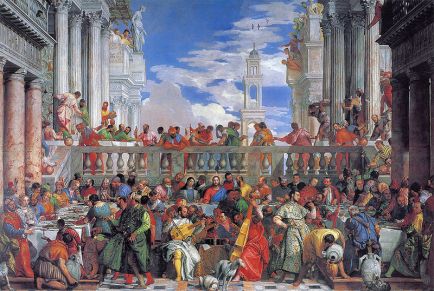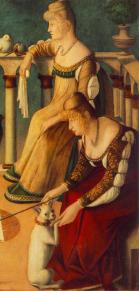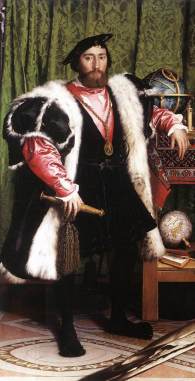
As usual in the world of fashion, people with an abundance of influence, control, and power tend to set the current trends and styles. This has always been true since the dawn of time. The only difference that back in the Olden Days the monarchs set these trends, while now it is usually celebrities.
Although numerous monarchs influenced Renaissance fashion, the Tudor monarchs of England had perhaps the most important impact on Western European fashions of the 16th century. And out of these monarchs, the most influential were Henry VIII and Elizabeth I.
Henry the VIII was, during the younger part of his life, active and reportedly handsome, extremely vain, and a symbol for all things manly. The Venetian ambassador described him in 1515 (when Henry would have been 24) as this: “His majesty is the handsomest potentate I ever set eyes on; above the usual height, with an extremely fine calf to his leg, his complexion very fair and bright, with auburn hair combed straight and short,…his throught being rather long and thick.” He also had a wide girth and large proportions that he enjoyed accenting with doublets stuffed at the shoulders, duckbill shoes, and codpieces. He was also never lacking in an abundance of fur and jewels to showcase his wealth. He reportedly spent 16,000 ducats on clothing annually, which would be about $3,140,000 today. He was also described as being “the best-dressed sovereign in the world: his robes [were] the richest and most superb that [could] be imagined: and he [put] on new clothes every Holyday.”

Subsequently, his styles became fashionable throughout the Western European empires. Methods, such as slashing & puffing and stuffing sleeves & shoulders, that enlarged the figure became wildly popular during his reign and remained even after his death. Even women’s clothing exhibited more fur and larger sleeves.
His six wives also made some considerable contributions. Katherine of Aragon from Spain introduced the Spanish farthingale to England. Anne Boleyn made French fashions of crescent caps/French hoods and tight, square-necked bodices popular in royal courts (although not French herself, she spent a few years there serving as maid of honor to Queen Claude and lady-in-waiting to Archduchess Marguerite). Anne of Cleves introduced Flemish styles the English court, including leg-of-mutton sleeves.
King Edward VI, Henry VIII’s only son and heir, continued in the fashions of his father. However, he used those styles to attempt to hide is small, slight figure rather than to accentuate his manly features as his father did. All though the rule of Lady Jane Grey lasted only nine days, she did manage to bring more high-necked, Spanish-style surcoat gowns into style. Queen Mary was not particularly popular, so did not have much influence on fashions of the time, although she was reported as wearing very ostentatious, bejeweled clothing.
And now we come to Elizabeth I. She was very fond of clothing, so much so that when she died she had over 3,000 gowns and headpieces in her wardrobe. Although she was never considered a great beauty, her style was widely admired and mimicked. She was a tiny woman–small-breasted and small-waisted. consequently, fashions accented a silhouette of a long, flat, narrow torso. Even men wore corsets to try to make their bodies fit this mode. Her pale complexion and high forehead caused women to wear even more white powder/paste on their faces than before and pluck their foreheads and eyebrows (Elizabeth actually died from lead poisoning from the lead that was in the white makeup she used to cover her smallpox scars). She also loved elaborate clothing just as much, if not more, than her father. Her outfits were always lavished with jewels, embroidery, ribbons, and lace. Her particular favorites were pearls, representing her image as the “Virgin Queen.” The below painting is her “Rainbow Portrait” and depicts the color and embellishments always decorating her gowns and headdresses.

This next portrait is her “Armada Portrait,” painted shortly after the defeat of the Spanish Armada. It portrays the styles she made fashionable, including the ruff, wasp waist, and leg-of-mutton sleeves, as well as her love of pearls.

Queen Elizabeth was one of the most loved monarchs of all time, and her influence in the realm of fashion is a good example of her influence over people, as well as their devotion to her.









